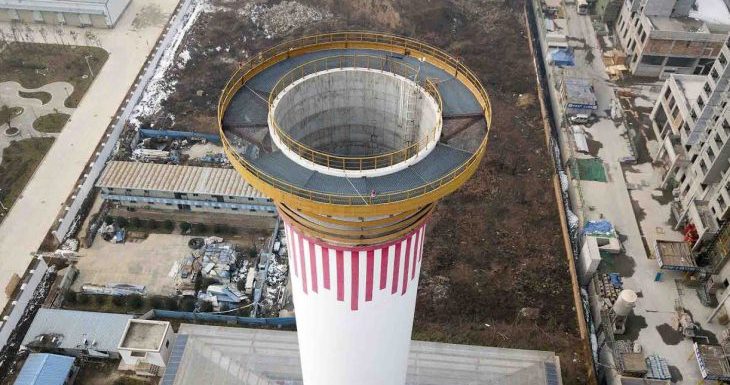The United Nations climate change conference confirms alarming data on pollution and record levels of greenhouse gases in the atmosphere: how to act to curb them? We have only 20 years to save the planet
The latest data on climate change and pollution continue to be worrying: politicians, technicians, and world representatives are sending intense action programs to counteract their disastrous effects, trying to develop appropriate strategies to ‘save’ the planet, and specify, are only 20 years available to be able to run for cover.
This is being discussed in Katowice, Poland, an industrial city chosen not by chance for the UN Conference on Climate Change – COP 24 – from 3 to 14 December, organized not only to share ideas, reflections, and ignite debates on the subject, but, from a more pragmatic point of view, to better define what was established by the Paris agreement on the limitation of global warming to less than 2 degrees Celsius – at best 1.5 – compared to pre -industrial.
Almost contemporary, the news released by the WMO – World Meteorological Organization about the new record reached by the main gases responsible for the greenhouse effect: carbon dioxide, methane and nitrous oxide currently exist in quantities that far exceed the pre-industrial levels. For this reason, it is necessary to take serious measures, such as those illustrated here.
Greenhouse gases and climate change: A general framework
It is now established by the most authoritative scientific studies that the main causes of atmospheric pollution, among many, are domestic heating systems, engines of internal combustion vehicles, industrial heat plants, thermal power plants and waste incineration plants. These sources are responsible for the release into the atmosphere of carbon dioxide, carbon monoxide, sulfur dioxide, nitrogen oxides, lead, suspended particles, hydrocarbons, and to these substances must be added all those released by industrial plants of chemical, metallurgical, extractive, and organic compounds of various kinds such as chlorofluorocarbons. These elements, once introduced into the atmosphere, can give rise to a series of chemical reactions and, depending on the degree of reactivity, it is possible to see pollution processes of various kinds, such as water acidification, ozone hole, effect greenhouse, eutrophication.
Global warming is the rise in the surface temperature of the planet Earth, and therefore of the atmosphere and oceans, due in small part to natural causes, but particularly to solar irradiation combined with the greenhouse effect of the atmosphere and to human activities: use of fossil fuels, deforestation, breeding, intensive farming. In particular, the combustion of coal, oil and other hydrocarbons leads to the production of carbon dioxide.
The record increases year by year. In 2016, the temperature was between 0.72 ° C and 0.96 ° C above the average for the period 1961-1990, beating the 2015 record, which in turn exceeded that of 2014. The consequences could be devastating: melting glaciers, changes in atmospheric and oceanic circulation, precipitation and drought, increased risk of desertification, increasingly extreme weather events, which in turn cause deterioration in the quality of the earth’s soil and life, with relative damage to agriculture, and above all to human health (possible spread of infectious diseases), acidification of the oceans, extinction of plant and animal species, and finally, not least, the rise in sea level that would lead to catastrophic floods for coastal places.
COP24: The planet is off course
The reflections that emerged during the early days of COP24 reveal strong concerns. The head of the UN agency, Petteri Taalas, was clear about the environmental problem of the planet, stating that “without a rapid cut of CO2 and other greenhouse gases, climate change will have increasingly destructive and irreversible impacts on life on earth”.
Also Michelle Bachelet, the UN High Commissioner for Human Rights, in an open letter addressed to all the States involved in the Katowice conference, expressed her concerns, stating that “whole nations, ecosystems, peoples and ways of life could simply cease to exist”.
As reported by the WMO, in fact, very high levels of carbon dioxide, methane and diazo-oxide are being recorded in the atmosphere.
As a result, the greenhouse effect has increased by 41% since 1990. “CO2 persists in the atmosphere for centuries and even more at sea. We do not have a magic wand to make all this excess CO2 out of the atmosphere,” said Elena Manaenkova, WMO general secretary.
The concentration of CO 2 in the atmosphere reached 405.5 parts per million (ppm) in 2017. “The last time the Earth experienced a similar level of CO2 was between 3 and 5 million years ago: the temperature it was 2/3 degrees higher and the level of the seas higher between 10 and 20 meters of the current level”, concluded Petteri Taalas.
The final document of the Katowice conference, identified as ‘Silesian Declaration’ and prepared by Poland, highlights the need to guarantee a “decent future” for coal workers.
On the environmental question, moreover, the Higher Institute of Health – ISS has expressed itself, announcing that there are only “two generations, or 20 years, to save the planet from climate changes and the devastating effects they will have on human health and of the territories”. In particular, the president of the Istituto Superiore di Sanità, Walter Ricciardi, declared at the opening of COP24: “This is the time we have left to put in place concrete measures. In 20 years it may already be too late.Already today the deaths in Europe linked to climate change are thousands a year, but millions will be in the near future if you do not act immediately. There is a serious risk that our grandchildren can no longer be outdoors for much of the year because of the increase in temperatures: the real danger is that heat waves, which in 2003 have made 70 thousand deaths, may move from limited periods of the year to over 200 days a year in some parts of the world “.
Science and Engineering at the service of the environment: What can be done for the salvation of the Planet?
The message transmitted to Katowice is clear: it is necessary, and quickly, to reduce CO 2 emissions in the atmosphere, and this provision must concern the entire Planet Earth. Unfortunately, however, there are many obstacles that make it difficult to achieve this purpose. Uncontrolled industrialization, huge waste production and incineration, policies that are still too little aware of the problem, or even skeptical – just think of the American President Donald Trump’s now famous irony on climate change issues – are a solid reality.
Bearing witness to this, the first day of the COP24 ended unexpectedly. Polish President Andrzej Duda firmly stated that “Poland cannot give up coal”, amid the disbelief and disdain of other participants, and despite repeated calls for decarbonization of the planet. Apparently, Poland could never give up coal as a strategic raw material that ensures the ‘energy sovereignty’ of the Poles.
So what are the action plans that can be implemented to try to save the planet?
In summary, decarbonisation and the consequent reduction of CO 2 emissions in the atmosphere can be facilitated by …
- Use of renewable forms of energy (solar, wind, hydroelectric energy);
- Intensification of material recycling activities and circular economy;
- Use of ecological means of transport.
Solar, wind and hydroelectric energy play a key role in the reduction and / or elimination of combustion processes both at industrial level and in terms of the energy needs of our homes (space heating, domestic hot water production, production) of electricity).
Decarbonising then means increasing the practice of recycling materials, thus avoiding as much as possible the transfer to landfill and subsequent incineration. Studies on the life cycle of materials, often linked to the LCAmethod – Life Cycle Assessment – are making considerable progress, even if not yet fully implemented.
For example, the dissemination of LCA instruments should be disseminated in particular at an industrial level. The benefits that companies can derive from the LCA evaluations of their products are numerous: obtaining environmental certifications, consequent increase of competitiveness on the market, optimization of production processes, and reduction of emissions in water, air and soil as well as significant savings.
In an LCA study, among other things, numerical analyzes can be carried out on the level of pollution of a given industrial process, by evaluating the greenhouse gases emitted into the atmosphere. The indicator used to measure how much a gas contributes to the greenhouse effect and global warming is the GWP – Global Warming Potential which is based on a series of criteria aimed in particular to evaluate:
- Predisposition of greenhouse gas to absorb infrared radiation;
- Residence time of the gas in the atmosphere;
- Exposure period.
The adoption of such an instrument can serve companies and not only to understand are what they polluting, what they are contributing to the greenhouse effect, and how to act to reverse the route.
The sustainable mobility (electric cars, bikes, car-sharing and bike-sharing), finally, is the solution to pollution generated by vehicle exhausts, making smarter cities, ecological and intelligent, and giving citizens more air clean, clear, breathable.
Tags: Engineering, Renewable Energy





Leave a Reply